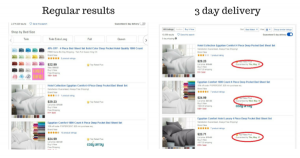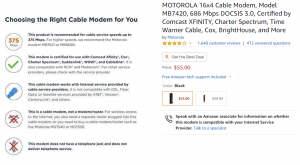
Your knee-jerk reaction when writing a blog for your business is to write content directly related to your business. You want to discuss why people should shop at your business and why your products are the best. But the truth is, if your readers wanted you to sell to them, they’d already be browsing your product pages or in your business.
Unlike conventional marketing tactics, a blog gives you an opportunity to engage with potential customers outside of the transactional atmosphere. Because of this, you have the unique ability to engage your customers in a casual and real way, making room for the formation of a long-term customer relationship.
So what do you write about if you shouldn’t write about your business or product in your next post? Ask yourself these three questions:
Does your content answer a question?
When people “search” and find your article, they’re most likely asking a question and looking for an answer. Remember that they’re not asking you about your products or your business. They’re asking questions related to those two. A car dealership might write lifestyle pieces relating to their target customer, such as “the best local hiking spots” or “what to bring on a road trip.”
The goal is to create copy that is relevant, useful, timely, and accurate and that answers a question that is related to your business. By sharing valuable information, customers will begin to trust you as an authority in the business and begin a positive relationship that isn’t just about selling. You become a brand, a local resource, and the business who treats customers as people not “the next potential sale.”
Is your content shareable?
Consider that your audience may not be a customer today, but that they may share your content with someone who is. Most readers aren’t looking for your business or product at all, they’re just browsing around the internet and happen upon your article.
Let’s say your recent post is a great piece about local surf spots. In the article there’s a link to “a new boards” inventory page. That reader may share the content with their friend via Facebook who is thinking about buying a new board, who might then purchase one of the boards referred to in the link.
So, not only is your inventory page being shared among qualified prospects, but also, search engines loves quality, shareable content – a key element that will help gain your piece of content some SEO value.
How can you capture potential customers and keep them around until they’re ready to buy?
Such as in the example above, your readers may not be ready to buy right now. But if you provide useful content and build a strong relationship, when they are ready to buy they’ll want to buy from you. You’ll want to plan several blog posts in advance and keep up with it so you always have new content. The key to keeping readers is to consistently deliver quality content.
To capture contact information for potential customers, consider giving them a way to engage with the site. Include a way to subscribe to your blog, create a clickable survey where they have to enter their information to submit, give member exclusive content such as a special coupon, an ebook, or a guide they can’t get elsewhere.
When you write a blog, you’re entering the personal space of your customer. Imagine that you have met your customer in a coffee shop. How would you interact with them? Would you try to sell them when they’re sitting there reading? Would you visit them in their home after dinner time and pitch them your product in their living room? You probably wouldn’t. But many times, that’s the purpose your blog will serve – that first, initial introduction to your next potential prospect. So make sure you make a good impression.
To learn more about how you can engage with your potential customers, check out our free ebook, Inbound Marketing 101: Understanding and Implementing an Effective Inbound Marketing Program.
Digital & Social Articles on Business 2 Community
(366)






